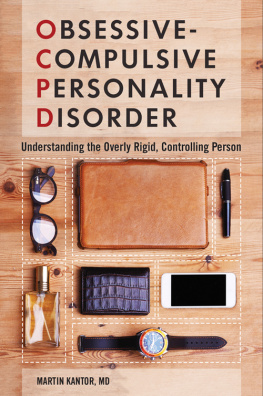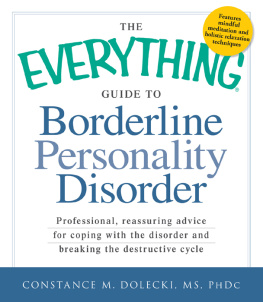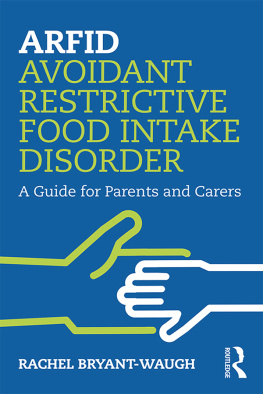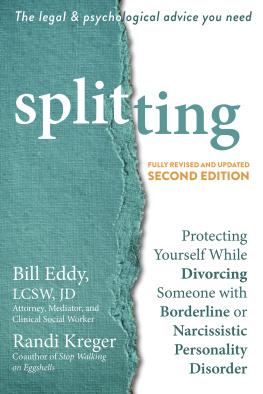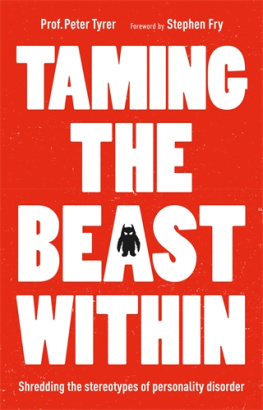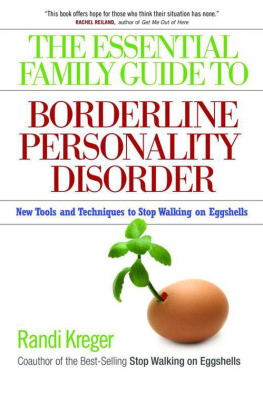Martin Kantor - The Essential Guide to Overcoming Avoidant Personality Disorder
Here you can read online Martin Kantor - The Essential Guide to Overcoming Avoidant Personality Disorder full text of the book (entire story) in english for free. Download pdf and epub, get meaning, cover and reviews about this ebook. year: 2010, publisher: Praeger, genre: Romance novel. Description of the work, (preface) as well as reviews are available. Best literature library LitArk.com created for fans of good reading and offers a wide selection of genres:
Romance novel
Science fiction
Adventure
Detective
Science
History
Home and family
Prose
Art
Politics
Computer
Non-fiction
Religion
Business
Children
Humor
Choose a favorite category and find really read worthwhile books. Enjoy immersion in the world of imagination, feel the emotions of the characters or learn something new for yourself, make an fascinating discovery.

- Book:The Essential Guide to Overcoming Avoidant Personality Disorder
- Author:
- Publisher:Praeger
- Genre:
- Year:2010
- Rating:5 / 5
- Favourites:Add to favourites
- Your mark:
- 100
- 1
- 2
- 3
- 4
- 5
The Essential Guide to Overcoming Avoidant Personality Disorder: summary, description and annotation
We offer to read an annotation, description, summary or preface (depends on what the author of the book "The Essential Guide to Overcoming Avoidant Personality Disorder" wrote himself). If you haven't found the necessary information about the book — write in the comments, we will try to find it.
Martin Kantor: author's other books
Who wrote The Essential Guide to Overcoming Avoidant Personality Disorder? Find out the surname, the name of the author of the book and a list of all author's works by series.
The Essential Guide to Overcoming Avoidant Personality Disorder — read online for free the complete book (whole text) full work
Below is the text of the book, divided by pages. System saving the place of the last page read, allows you to conveniently read the book "The Essential Guide to Overcoming Avoidant Personality Disorder" online for free, without having to search again every time where you left off. Put a bookmark, and you can go to the page where you finished reading at any time.
Font size:
Interval:
Bookmark:

The Essential Guide to Overcoming Avoidant Personality Disorder
This page intentionally left blank
The Essential Guide to Overcoming Avoidant Personality Disorder
MARTIN KANTOR, MD
Q PRAEGER
AN IMPRINT OF ABC-CLIO, LLC Santa Barbara, California Denver, Colorado Oxford, England
Copyright 2010 by Martin Kantor, MD
All rights reserved. No part of this publication may be reproduced, stored in a retrieval system, or transmitted, in any form or by any means, electronic, mechanical, photocopying, recording, or otherwise, except for the inclusion of brief quotations in a review, without prior permission in writing from the publisher.
Library of Congress Cataloging-in-Publication Data
Kantor, Martin.
The essential guide to overcoming avoidant personality disorder / Martin Kantor. p. cm.
Includes bibliographical references and index.
ISBN 978-0-313-37752-5 (hard copy : alk. paper) ISBN 978-0-313-37753-2 (ebook) 1. Avoidant personality disorder. I. Title.
RC569.5.A93K36 2010 616.85'82dc22 2009044857
ISBN: 978-0-313-37752-5 EISBN: 978-0-313-37753-2
14 13 12 11 10 1 2 3 4 5
This book is also available on the World Wide Web as an eBook.
Visit www.abc-clio.com for details.
Praeger
An Imprint of ABC-CLIO, LLC
ABC-CLIO, LLC
130 Cremona Drive, P.O. Box 1911
Santa Barbara, California 93116-1911
This book is printed on acid-free paper (S)
Manufactured in the United States of America
To M.E.C.
Hello Martin. For many years I am spiraling deeper into isolation and only yesterday I read about Avoidant PD and discovered I fit on all counts. I am not sure what to do about it. I am scared to talk to people and my memory is weak.
letter to the author
viii | Contents | |
Chapter 14 | ||
Chapter 15 | ||
Chapter 16 | ||
Chapter 17 | Fear of Criticism | |
Chapter 18 | Low Self-Esteem | |
Chapter 19 | ||
Chapter 20 | ||
Notes | ||
reface
Sufferers from avoidant personality disorder (AvPD) fear forming and maintaining relationships because of ongoing, engaging, deep, pervasive, multilayered interpersonal anxiety. This anxiety causes them to have difficulty meeting, connecting with, getting close to, and staying involved with other people. According to Oldham and Morris, the disorder occurs in fully 10 percent of patients of outpatient mental health clinics,
I believe that even these disquieting statistics underestimate the extent of the problem, with this disorder far more widespread than most patients believe and clinicians acknowledge. This is because avoidants themselves overlook AvPD because they dont know it exists, or they downplay AvPD because they believe that having social anxiety is somehow shameful. And their therapists, equally misinformed about, or reluctant to recognize, the disorder, dismiss their suffering as normal shyness, reticence, unfriendliness, cliquishness, or as just part of growing up; or, spotting the disorder, they tell their patients that the problem is insignificant or condone it as acceptable, justified, and even romantic. They then offer reassurances that all is well and say that no therapy is necessary, or if it is necessary, it should be for something else entirely.
On their part, researchers often miss the diagnosis because they fold AvPD into borderline personality disorder (BPD). They fail to distinguish the characteristic chronic distancing patterns of AvPD from those of BPD, which consist of a more acute cyclic, intermittent approach-avoidance shifting. Unlike in AvPD, where the distancing is dynamically, if not clinically, resolute, in BPD, overly close intense relationships characteristic of the object hunger-merging phase of the borderline condition are in turn fitfully undone by an equally intense object satiation-emerging phase. As a result, we see the typical borderline tendency to alternate rapidly between overvaluation of and love for, and undervaluation of and disdain for, other peoplethe all too familiar come here, go away, I love you.
More often still, and with even more tragic results, is the widespread proclivity of researchers to subsume the diagnosis of AvPD under the rubric of social phobia and then to report exclusively on social phobia, virtually ignoring AvPD. Thus the PDM, or Psychodynamic Diagnostic Manual, refers to AvPD as phobic (avoidant) personality disorder. In some ways, avoidants do resemble social phobics, and some therapists believe that they can effectively treat AvPD as if it were a compendium of social phobias, expecting the former to disappear when the latter are relieved. But to my way of thinking, the two disorders differ significantly diagnostically and therapeutically, in large measure because they differ structurally. For avoidants, unlike social phobics, are not terrified by specific, discreet, easily identifiable, well-delineated trivial prompts such as having to speak in public, use a public rest room, eat and swallow while being observed, or enter a crowded room where there is a party going on. Instead, they are troubled by a panoply of mostly negative personality traits that have more of an existential than a situational implication. Thus they suffer not from a fear of writing a check in public but from a fear of getting close to others and committing themselves to one someone special. Clearly, to me, while the dynamics of the two disorders overlap, each takes a unique form , with social phobia being a symptom disorder and AvPD being a personality disorder , and with the former being a modified, encapsulated, delimited version of the latter. Thus, though sufferers of both disorders are struggling emotionally with a fear of criticism and humiliation, the one, the social phobic, displays the fear as a need to avoid using a public rest room to urinate, whereas the other, the individual with AvPD, displays it as a global need to avoid not only restrooms, but also all rooms with people in them, making the avoidant individual reluctant to enter into life and to do all the things that happy people living normally ordinarily do.
This is a crossover text meant for two audiences. The first is for therapists hoping to properly identify and thoroughly fathom AvPD in preparation for developing a dedicated treatment approach to helping their patients cope with, or fully overcome, its ravages. The second is for sufferers from AvPD hoping to free themselves from their painful shyness and self-destructive distancing so that they may emerge from the dark shadows of isolation and loneliness into the bright light of warm, close, satisfying, loving, lasting relationships. Thus this book can be read in two ways: it is a guide for therapists developing a psychotherapeutic technique suitable for effectively treating AvPD and a manual for sufferers hoping to develop a self-help approach to profitably modify their lives and change their lifestyles, as they come to subdue their irrational fears and newly and more successfully cope with their overwhelming, life-sapping, happiness-destroying interpersonal anxiety.
This page intentionally left blank
PART ONE
AND CAUSATION
-<3^3
This page intentionally left blank
In this chapter, I focus on classic avoidant personality disorder (AvPD), a disorder whose individuals, as Fenichel noted in 1945, suffer from social inhibitions consisting of a general shyness [that may lead to withdrawal] from any social contact [because] they anticipate possible criticisms. I start with a summary of the Diagnostic and Statistical Manual of Mental Disorders, fourth edition (DSM-IV ) criteria for AvPD, then add a summary of criteria formulated by Francis and Wi-diger, Benjamin, Horney, me, and the American Psychological Association Help Center.
Font size:
Interval:
Bookmark:
Similar books «The Essential Guide to Overcoming Avoidant Personality Disorder»
Look at similar books to The Essential Guide to Overcoming Avoidant Personality Disorder. We have selected literature similar in name and meaning in the hope of providing readers with more options to find new, interesting, not yet read works.
Discussion, reviews of the book The Essential Guide to Overcoming Avoidant Personality Disorder and just readers' own opinions. Leave your comments, write what you think about the work, its meaning or the main characters. Specify what exactly you liked and what you didn't like, and why you think so.

